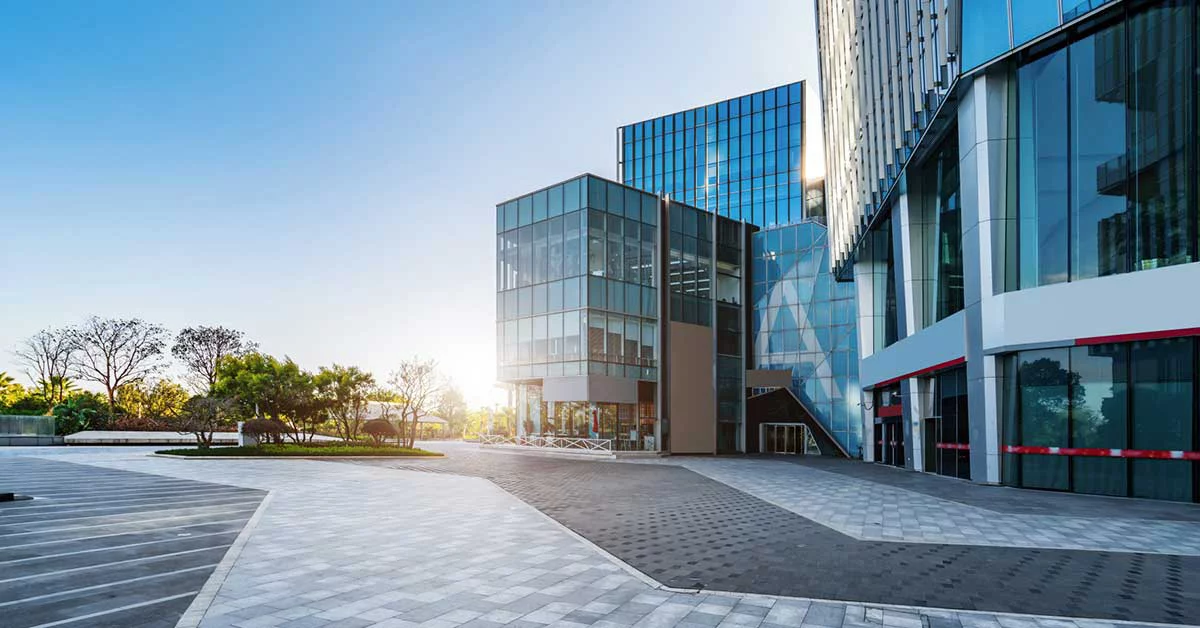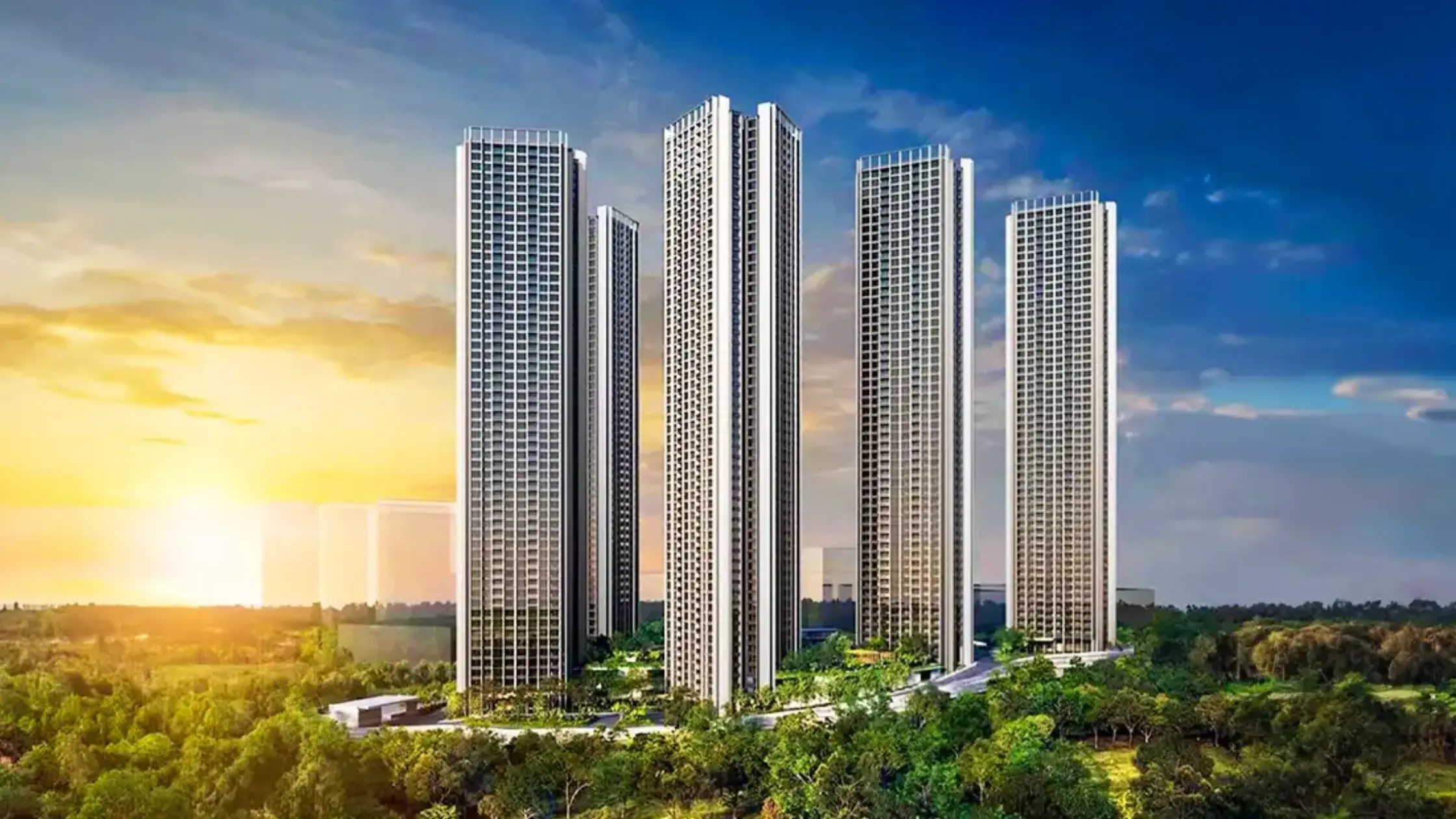Table of Content
In today’s fast-paced urban environments, the need for sacred, personal spaces that provide spiritual solace is more important than ever. Modern homeowners and office spaces are increasingly integrating temples into their interiors, reflecting the growing demand for spiritual corners within contemporary designs. Temple Design Trends: Balancing Tradition and Modern Living illustrates the innovative ways temples are evolving in various settings, from premium to affordable spaces.
The Essence of Temple Design in Modern Times
Temples have long been integral to Indian homes, offering a space for meditation, worship, and spiritual connection. In modern homes and offices, where minimalism and functionality reign supreme, Temple Design Trends focus on creating these sacred spaces in ways that blend seamlessly with modern lifestyles. Whether it's a lavish villa or a compact apartment, the trend highlights a shift toward balancing traditional reverence with modern aesthetics.
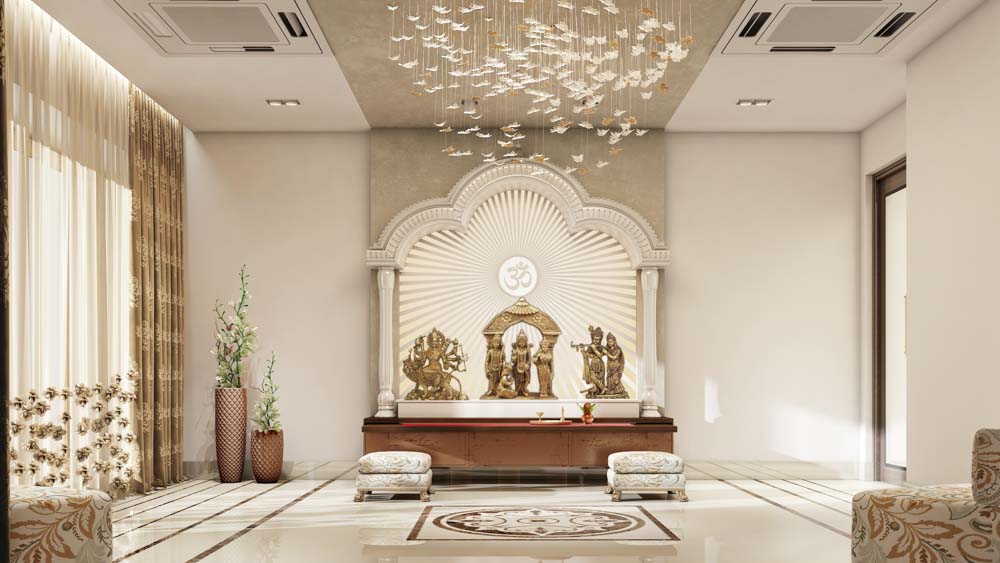
Redefining Sacred Spaces: Modern Temple Design Trends
1. Minimalist and Compact Designs for Apartments
As urban living grows more space-conscious, especially in flats and apartments, minimalist temple designs are gaining popularity. These compact temples prioritize functionality, using sleek, clean lines that blend effortlessly into modern spaces. Often made from wood, glass, or marble, and other modern design home temples, these temples are designed to be both visually appealing and easy to maintain.
In apartments, where space is often limited, small wall-mounted temples have become common. These temples can be incorporated into living rooms, bedrooms, or even hallways without taking up too much space. Minimalism here doesn’t mean a lack of reverence; instead, it ensures that even the smallest home has a dedicated space for prayer and meditation.
Temple Design Trends in flats also focus on foldable or hidden altars. These modular units can be opened for daily prayers and closed afterward, maintaining a clean, modern look when not in use. For families living in apartments, this trend offers the perfect balance between spirituality and practicality.
2. Luxury Temple Designs for Premium Homes
While minimalist designs suit modern, compact living spaces, the luxury market sees an increasing demand for opulent temple designs. In premium homes and offices, temples are often grand, spacious, and designed with exquisite materials like Italian marble, teak wood, or intricate brass and gold detailing.
In larger houses or villas, homeowners often dedicate entire rooms for temples, complete with custom-made deities, intricate carvings, and backlit panels. These luxury temples blend traditional Indian design elements, such as carved pillars and marble floors, with modern lighting solutions like ambient LED lighting to create a serene, luxurious atmosphere.
For high-end homes, Temple Design Trends are leaning toward fully personalized spaces where designers collaborate with clients to create temples that reflect personal spirituality and aesthetic preferences. These spaces often feature modern comforts like climate control, automated lighting systems, and even acoustic settings for chanting or meditation, making the temple a sanctuary of both tradition and technology.

3. Affordable Temple Designs: Blending Functionality with Spirituality
In contrast, for those looking for affordable options, the Temple Design Trends focus on efficient use of space and materials. In smaller homes or budget-conscious designs, portable and DIY temples are becoming increasingly popular. Homeowners can opt for pre-fabricated units that can be easily installed, requiring little space or investment.
For apartments or smaller homes, temple designs focus on accessibility and simplicity, using materials like wood or MDF (Medium-Density Fiberboard) that are both durable and affordable. The trend also includes temple units that double up as storage spaces or can be integrated into existing furniture like wardrobes or bookshelves, maintaining the spiritual function without taking up much floor space.
These affordable temples prioritize the spiritual aspect over grandeur, yet they manage to retain a sense of elegance and calm, making them perfect for modern homes.
4. Incorporating Temples in Modern Offices
Temples in office spaces might seem unconventional, but **Temple Design Trends** have made this a growing trend, especially among Indian businesses. Having a small, dedicated temple in the office allows employees to find moments of peace amidst the busy workday. This not only fosters a calm environment but also reflects the growing importance of mindfulness and meditation in modern corporate culture.
In offices, the design of the temple is usually compact and minimalistic, often integrated into a small corner or an unused space. The use of neutral colors, natural materials, and simple designs ensures that the temple complements the professional environment while providing a spiritual refuge for those who need it.
5. Temples for Open Floor Plans
In modern apartments and homes with open floor plans, the challenge is to create a temple space that doesn’t feel out of place. Many designers are now integrating temple spaces into living rooms or common areas by using dividers, screens, or glass enclosures. These solutions allow the temple to be part of the main living area while still maintaining a sense of privacy and sanctity.
Where to Position a Mandir in Your Home
According to traditional beliefs like Vastu Shastra, the northeast corner, also known as the Ishan corner, is considered the most auspicious place for a home temple or mandir. This corner receives early morning sunlight, which is believed to be spiritually energizing. If the northeast is not available, the east or north direction is the next best.
Here are some specific placements for a home temple based on common practices:
- Living Room: Many modern homes integrate the mandir into the living room, especially in apartments or homes with space constraints. You can create a small alcove or use dividers to ensure the space feels private and sacred.
- Separate Room: If space allows, dedicating an entire room to the temple is ideal. This allows for a peaceful, uninterrupted place for worship and meditation.
- Shelves/Wall Niches: For compact spaces, a small niche or shelf in the living area or hallway can serve as a mandir. This is especially common in modern apartments.
- Avoid: Avoid placing the mandir under staircases, in bedrooms, or near bathrooms. These areas are not considered suitable for worship according to Vastu and Feng Shui principles.
Also Read: 7 Best Temple Design For Your Living Room
What are the best materials to use for a Mandir?
In terms of materials, wood remains one of the most popular choices for mandir designs, particularly for traditional homes. Teak, rosewood, and Sheesham wood are often used to craft intricate, beautifully carved temples that evoke a sense of warmth and tradition. For a more luxurious feel, marble is a premium option. White marble mandirs, in particular, have a timeless and elegant appeal, making them ideal for larger homes or dedicated prayer rooms. Marble’s cooling properties and its ease of maintenance make it a preferred choice for those looking to invest in a more permanent and refined temple design.
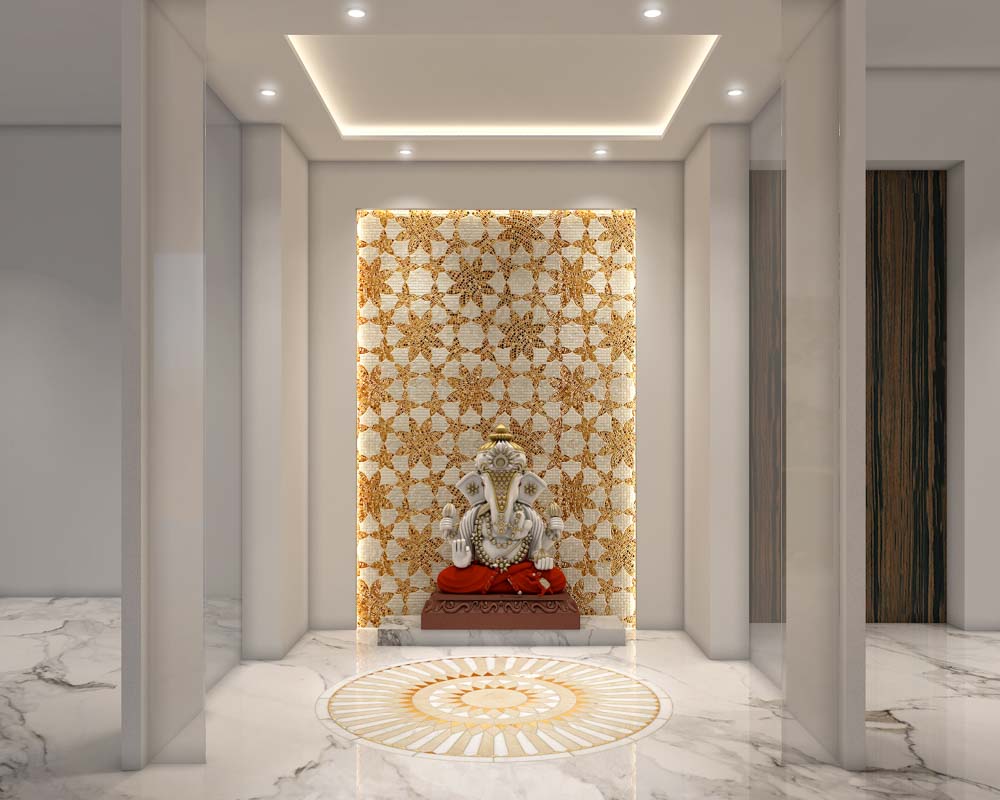
For homeowners looking for a blend of durability and affordability, granite is another excellent option. Granite temples are both sturdy and easy to maintain, often available in polished or rustic finishes to suit different design preferences. Meanwhile, metal temples, particularly those made of brass or copper, offer a lightweight and portable solution, especially for smaller spaces. These materials are associated with divine symbolism and are frequently used in compact mandirs.
In more contemporary homes, materials like acrylic and glass are gaining popularity. These materials offer a modern, sleek appearance that complements minimalistic designs while still creating a dedicated spiritual space. They are also highly customizable, making them ideal for modern apartments or homes with a more neutral or minimalistic aesthetic. Lastly, stone mandirs bring an earthy, traditional feel, ideal for outdoor or garden spaces. Stone is highly durable and weather-resistant, making it a great choice for large homes with outdoor areas.
Floating Shelf Modern Mandir Designs for Flats
A floating shelf mandir design in flat is a great option for households with limited floor space when it comes to mandir décor ideas at home. What's best? It includes drawers for storing matchboxes, incense sticks, and other items as storage alternative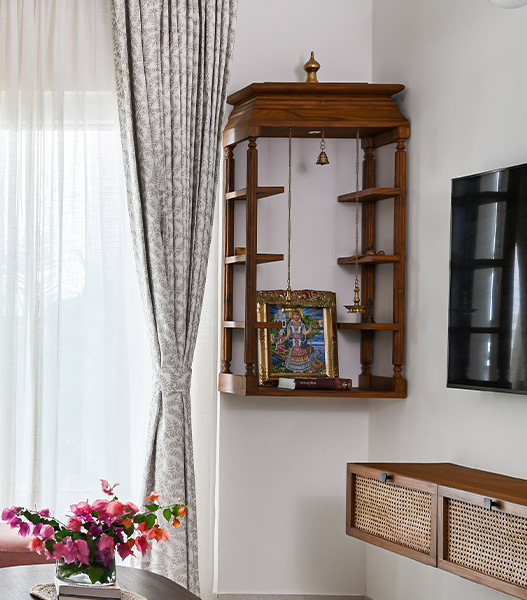
Elegant Passage Temple Design in Flat
One of the most ingenious ways to integrate a small temple design into a flat is by utilizing an empty or underutilized space in your home. A small passage, for instance, can be transformed into a cozy pooja room. These home mandir decoration ideas and temple designs for homes present practical yet clever approaches to infuse charm into those often overlooked spaces.

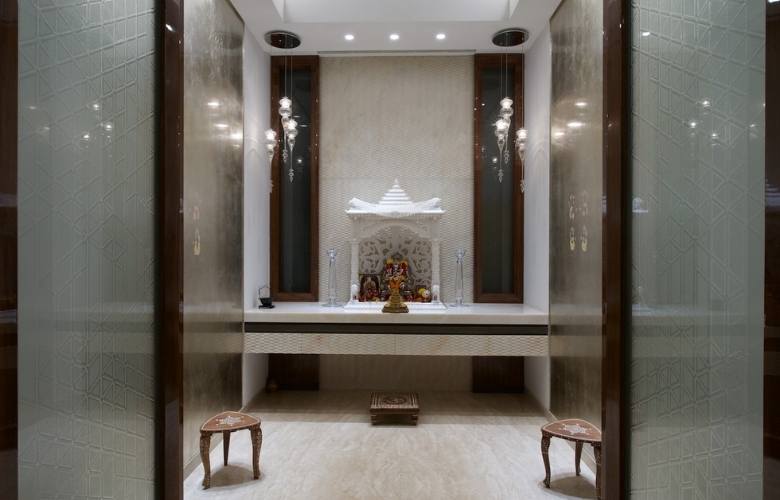
Essentials Thing We Take In Home Temple
When setting up a mandir, it's essential to include the right elements to preserve its spiritual significance. Idols of deities should be placed on an elevated surface, and the temple should include the basic essentials like a diya (lamp), incense holder, and small storage for religious texts or other worship items.
Whether you're incorporating the mandir into a compact apartment or a luxurious villa, the evolving trends in temple design cater to every lifestyle, offering the perfect balance between tradition and modernity.
Conclusion: Temple Design Trends for Every Space
As the demand for temples in homes and offices grows, the focus on Temple Design Trends: Balancing Tradition and Modern Living has become crucial. Whether you're looking for a premium, luxurious temple or a simple, affordable option for a small apartment, the trends in temple design cater to a wide variety of tastes and budgets.
The key is to create a space that reflects the individual's spiritual beliefs while aligning with modern living standards. From luxurious temples made of marble and gold to compact, foldable units perfect for small flats, the evolution of temple design proves that spirituality can coexist with contemporary lifestyles.
Also Read: Attractive Positive Vibe Symbols For Your Home
FAQs
Q. How can I integrate modern materials while preserving traditional temple aesthetics?
Ans. Combine contemporary materials with classic designs for a harmonious look.
Q. What are popular modern design elements for home temples?
Ans. Modern elements include sleek finishes, minimalist furniture, and innovative lighting.
Q. How do I design a small temple space effectively?
Ans. Use space-saving furniture and wall-mounted features to maximize a compact area.
Q. What lighting trends enhance both traditional and modern temple designs?
Ans. Combine ambient LED lighting with traditional fixtures to create a serene and modern atmosphere.
Q. Which color schemes balance modern and traditional temple elements?
Ans. Use neutral tones with accent colors from traditional palettes to achieve a cohesive look.


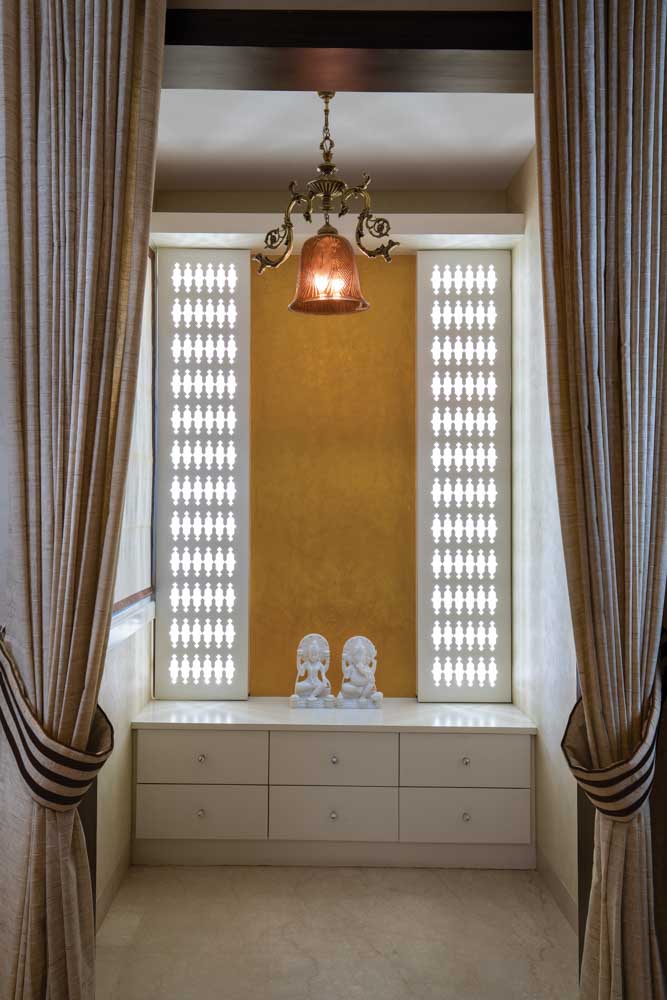
_1700472931.webp)
_1698311251.webp)

